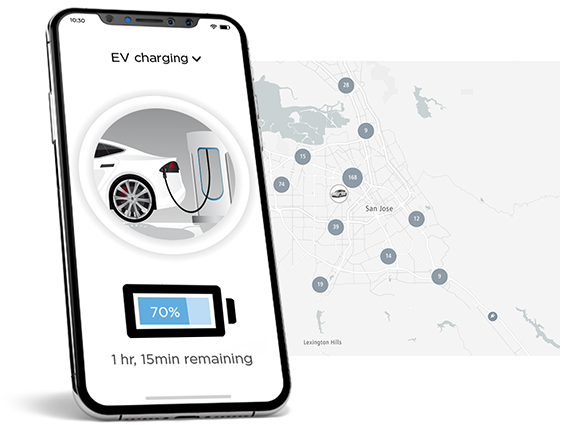TomTom’s EV APIs address consumer reservations that are a factor for speed of wide-spread adoption of electric vehicles.
Electric vehicles will shape the future of mobility. EV’s already offer superior autonomy, affordability and sustainability when compared with petrol-powered or diesel vehicles. Despite the benefits of driving electric cars, the EV revolution has yet to fully develop. In fact, electric vehicles comprise less than 1% of new passenger cars in Europe.

NDS Association member TomTom published a white paper about technologies to address range anxiety. Range anxiety is a significant factor limiting wide-spread adoption of electric vehicles. This psychological phenomenon can arise from concerns that charging infrastructure is insufficient for longer journeys. Drivers fear they will find themselves stranded in areas with no facilities to charge their vehicles. Certainly, inadequate infrastructure has a role to play in encouraging range anxiety. However, another issue at hand is deficient trip planning tools that restrict users’ access to reliable and accurate information.
Better location and navigation technology can sooth users’ fears. Drivers feel more secure when they can access the actual reachable range of their electric vehicles, routes that minimize battery usage, the right charging stations, and routes with optimized charging stops.
NDS Association member TomTom provides these services and more with the launch of two new EV APIs for developers to help build applications for electric mobility.
The TomTom Long Distance EV Routing API and the TomTom EV Charging Stations Availability API are new editions to the already extensive range of tools TomTom offers to developers who build applications for electric vehicle drivers. TomTom EV APIs aim to minimize time spent on the road, maximize convenience, and enable a reliable and stress-free driving experience.
Here is how these work: TomTom EV APIs take into account vehicle and road network characteristics, traffic patterns, charging stations per plug type, stops to charge, and charging periods in reference to the estimated arrival time. Based on this information, TomTom plans the most eco-friendly and energy efficient route to minimize battery usage and extend the range of the vehicle, encouraging drivers to travel further with their electric vehicles.
TomTom’s new Long Distance EV Routing API calculates a route from A-to-B beyond a single charge. The API automatically determines charging stations’ locations, an optimal route to include them, and provides an estimated time of arrival including the charging time. TomTom’s EV Charging Stations Availability API provides the real-time availability of a charging station per plug type. Combined with NDS maps’ comprehensive EV POI content, dynamic EV services and powerful online map applications, TomTom’s Map APIs offer industry leading map reliability to its users.
TomTom’s EV APIs have serious potential to relieve the psychological restraints preventing wide – spread adoption of electric vehicles. Though the future is far from certain, better location and navigation technology can ease range anxiety and help usher in an overdue EV revolution.
Back to news →